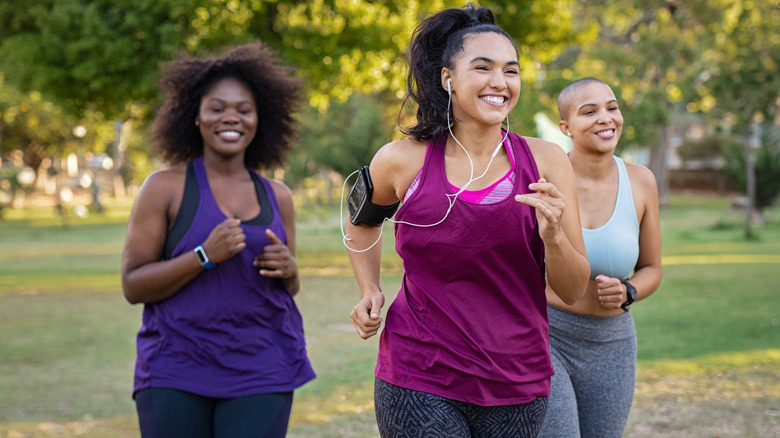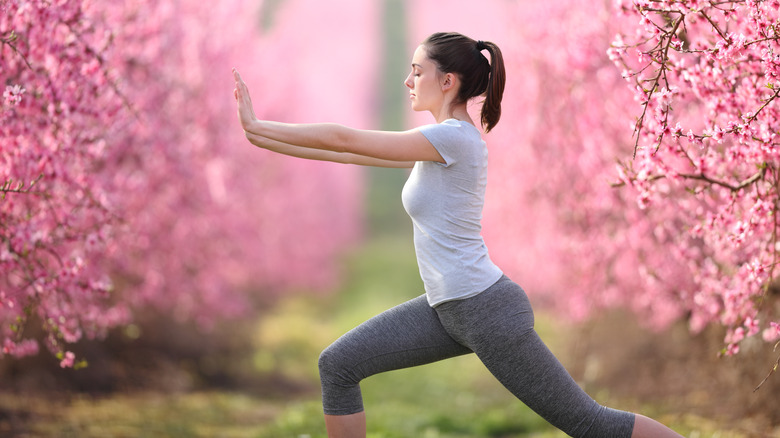This Is Why Is Active Recovery Is So Important
Regular exercise is a great way to help keep your body healthy and in shape, but recovering after an intense workout is just as important. There are two types of recovery you can do: passive and active (via Verywell Fit). Passive recovery refers to a day of complete rest, while active recovery involves performing low-intensity exercise after an intense workout session.
Active recovery is an important part of fitness because it can help increase blood flow to your tissues and promote muscle repair. By improving circulation, fresh blood can bring nutrients to your muscles so they can heal and repair themselves. Active recovery can also aid in the removal of waste products built up during exercise. "Think of active recovery as any low impact activity that gets your heart rate up a bit and the blood flowing to flood the muscles with nutrients and clear out metabolic waste," Jonathan Amato, a physical therapist, tells Men's Health. "It could even be the same exercise or activity that you performed rigorously, with much less intensity."
What are some active recovery activities?
If you're looking for some activities to do on your next recovery day, look no further. There are plenty of low-intensity exercises you can perform to help increase blood flow to your muscles. For instance, tai chi is a great active recovery activity after a strenuous workout (via Self). As a low-impact form of exercise, tai chi can help you build strength and balance without putting too much stress on your body. It can also help activate the parasympathetic nervous system, which can help your body slow down and recover from an intense workout.
Steady-state walking and running can also help your body recover after exercise. This involves walking or running at a moderate pace for 30 to 40 minutes. "This type of cardio elevates your heart rate and makes you break a sweat," Lindsey Corak, certified personal trainer, told Self. It can also help you improve your cardiovascular endurance. Other active recovery activities include yoga, swimming, light resistance training, hiking, and steady-state cycling.


